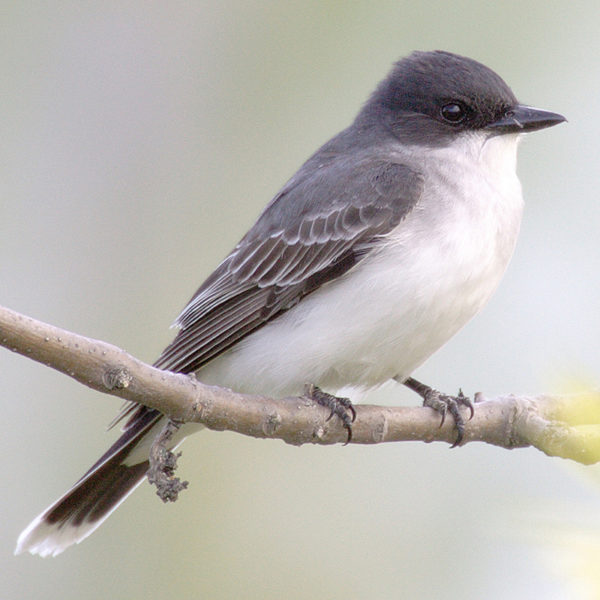Information About The Bird
Seen/Heard at
Decorah North
Diet
Eastern Kingbirds are flycatchers. During spring and summer, they catch insects in midair, including beetles, flies, bees, wasps, crickets, grasshoppers, and butterflies. As insects become less available in fall and winter, kingbirds forage for fruit, including mulberries, serviceberries, cherries, blackberries, elderberries, and nightshade. Fruit makes up the majority of their diet on their wintering grounds.
Eastern Kingbirds commonly ‘hawk’ from a perch, catching insects in the air and sometimes eating them on the wing. Why is the Kingbird a tyrant? You can learn more about that here: https://www.birdsoutsidemywindow.org/2010/08/05/the-tyrant/.
Nesting
Eastern Kingbirds breed from early May through mid August. After choosing a nest site, female kingbirds use twigs, coarse roots, weeds, and strips of bark to build bulky, cup-shaped nests, which they line with soft materials, including willow catkins, cottonwood down, cattail down, hair, and feathers. Eastern Kingbirds lay two to five white eggs speckled with reddish-brown spots, and produce one clutch a year. Females incubate eggs for 14-17 days and both parents tend young, which leave the nest 16-17 days after hatching. To learn more, visit Cornell’s website.
Citations
Bird Range Maps of North America
Ridgely, R.S., T.F. Allnutt, T. Brooks, D.K. McNicol, D.W. Mehlman, B.E. Young, and J.R. Zook. 2003.
Digital Distribution Maps of the Birds of the Western Hemisphere, version 1.0. NatureServe, Arlington, Virginia, USA. Data provided by NatureServe in collaboration with Robert Ridgely, James Zook, The Nature Conservancy – Migratory Bird Program, Conservation International – CABS, World Wildlife Fund – US, and Environment Canada – WILDSPACE.
Web Link: http://bit.ly/2ynPQ5I
Birds of North America: https://birdsna.org/Species-Account/bna/species/easkin/introduction
General Description
Eastern Kingbirds have crisp dark overparts, crisp white underparts, white-tipped tails, and black heads.
Migration
Eastern Kingbirds migrate from Decorah to South America, wintering in Venezuela, Columbia, Ecuador, Peru, and Bolivia east into the western Amazon basin.
Measurements
Length: 7.5-9.1 in/19-23 cm
Wingspan: 13.0-15.0 in/33-38 cm
Weight: 1.2-1.9 oz/33-55 g
Wing Design
Elliptical. Optimized for bursts of fast, tightly controlled flight. Excellent at taking off quickly, maneuvering through branches, and avoiding predators.
| See also different: | Decorah North Nest, Tyrant Flycatchers |
